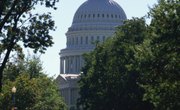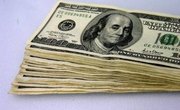Countries can use both fiscal and monetary policies to achieve their desired macroeconomic objectives. Fiscal policies involve altering taxation and spending strategies; this falls under the purview of Congress and the White House. Monetary policy, determined by the Federal Reserve, refers specifically to the actions that central banks take to manipulate the amount of currency in circulation to meet objectives such as maximum employment and managed inflation. While both can help keep an economy proceeding on course, there are limitations in how effective they can be.
Time Lag
The recognition of the need for monetary and fiscal policy changes isn't instantaneous -- neither are the effects of a fiscal or monetary policy change. By the time a tax cut boosts spending, for example, the economy may have already turned the corner and be in danger of overheating. Alternatively, the situation may have gotten worse, meaning more extreme measures are needed than were originally approved.
Structural Limitations
Regardless of the state of the economy, there are steps beyond which monetary and fiscal policies cannot go. For example, the Federal Reserve can't set the interest rates well below zero, because it creates a disincentive to use the banks at all. If banks started charging customers interest for deposits rather than paying it, consumers likely would pull their money out. In another example, government spending may be limited by established debt ceilings, meaning that it can't be used as a tactic to boost the economy.
Uncooperative Consumers
The Economic Stimulus Act of 2008 made one-time payments and rebates to consumers in the hope of bolstering the economy, but economists argue that it failed to boost consumption as expected. The Administration hoped that people would take the money and immediately spend it, thereby increasing demand for goods and inspiring businesses to expand. However, in a survey conducted by the University of Michigan's Survey Research Center, only one-fifth of the respondents said the stimulus would be used mostly for increased spending. The most common plan for the stimulus was debt repayment, and placing the money in savings was another common answer. This shows that the effectiveness of fiscal policies is limited by the willingness of the public to perform as predicted.
Because the economy is so complex, it's difficult to determine whether a monetary or fiscal policy tool was responsible for a particular result. After the 2009 American Recovery and Reinvestment Act, for example, the Washington Post noted nine studies of its effects. Six found that the stimulus had a significant and positive effect on growth, while three found the effects either very small or impossible to detect.
Contrary Objectives
The Federal Reserve has duelling mandates in promoting both full employment and stable inflation. Practically speaking, it means making difficult choices when both are considered critical issues, since policy tools that help achieve one of those goals tend to negatively affect the other. The Fed and policymakers often have to weigh how much unemployment is acceptable to lower the inflation risk, and how high of an inflation rate is acceptable to boost the job market.










